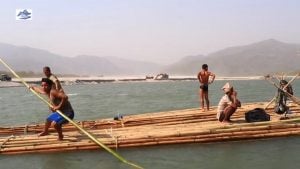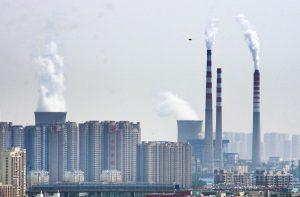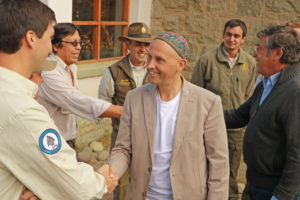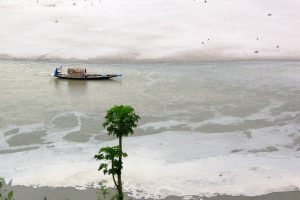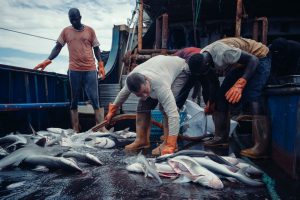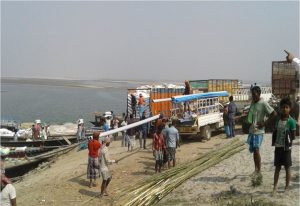Resilience is a buzzword in climate change discussions around the world. Nuances over what it really means, while translating it into action on the ground, are still under debate in academia and the development sector.
Some have said resilience is like “pressing a sponge” – once pressed it returns to its original shape. Others argue that it’s like jumping on a trampoline – once you jump, it bounces and takes you forward, rather than just returning to the original position.
Disrupting any function of a society has large costs, so while debates over its definition continue, there is an urgent need to build communities and institutions that can absorb stresses and shocks due to climate change, and keep functioning.
More than 200 experts from across the globe – mostly from the eight countries in the Hindukush Himalaya region – recently gathered in Nepal’s capital, Kathmandu, to discuss ways to build resilience in the region. Ramesh Bhushal, Nepal editor of thethirdpole.net, spoke with Dhrupad Chaudhary, an expert on resilience at the International Centre for Integrated Mountain Development, which organised the conference.
What does resilience mean in simple terms?
Resilience is the ability of an individual, community, household to bounce back from shock or stress. In a more refined definition, we talk not only about bouncing back but also about bouncing forward, where there is transformative change from someone’s earlier position. It’s the ability of an individual, household, community or even local institution to be self-reliant, to recognise where external support is needed, and to prepare to overcome any shock that comes due to climate change.
Could you please provide some examples?
Most of the rural communities in the mountains are agrarian – farming is their major source of income. Bring in shocks to that system, and their sources of livelihood are disrupted. For most of the farmers in the eastern Himalayas, one of the cash crops is ginger. While ginger gives a good return, it’s very susceptible to disease. If there’s too much rainfall, there is a danger of rot. That will significantly reduce a farmer’s income and this is where you need intervention.
If the rainfall pattern is changing and the possibility of such shocks is high, communities could share the risk by diversifying their crops. Having the ability to see that there could be risk, but planning to spread that risk, is what a resilient community does.
Read more: Climate smart practices revive cardamom farming in eastern Himalayas
Another example is shocks from the market. Until two years ago, cardamom farming in Nepal was lucrative and farmers were getting good returns. But suddenly, the prices dropped over the past two years. Farmers lost their income, which decreased their purchasing capacity. Slightly well-off famers may have had some savings, but for most there is no way to tackle that shock. They may borrow from others to cope for a certain period but that is not a good system.
But if farmers have access to credit [which is better than a village moneylender] they could tide over that period of shock, wait until the next crop comes in, and then pay back their debts or increase their income again.
What are the needs then? Where do we start building resilience?
One study in Nepal, India and Bhutan showed that diversity is for resilience. We looked at 90 villages in these three countries across different altitudes and wherever you have more diversity of crops and sources, people are able to deal with climate induced shocks, and they are more self-reliant. This knowledge could be the foundation for resilience.
The second thing needed is the empowerment of the communities so that they can interact with government agencies that provide external support. Most of the communities in the hills of Myanmar, Bhutan and Nepal are marginalised. There is an urgent need to understand what the needs of the communities are, where the resources could come from, and what government agencies are responsible for.
Many traditional systems work well in mountain communities but they also have weaknesses. One of those is the poor representation of women in decision-making. Today, legislation is being drafted that will make efforts to reduce this, but there is a serious gap between the traditional systems and modern legislation.
Why is it more important to the mountains to talk about resilience?
If you come from mountains, you understand the complexities. We have talked about the challenges and difficulties of the mountains, such as inaccessibility, but we have talked little about the positive aspects of mountains and the opportunities and services they provide – such as energy, biodiversity and food – to downstream people. Many of the mountain crops are already stressed, but they are nutritious and hold potential for the foods of the future. This can be used as resources and increase the income of mountain people [while also increasing the nutrition of others].
How can we connect those missing links?
A lack of opportunities in the mountains have caused young people to migrate away, so we need to emphasise the opportunities that are available. And we need more investments in the mountains to create more opportunities, which will lead to more resilient communities.
Rural communities are directly related to urban ones. Migration from rural communities burdens urban areas. Take the example of Kathmandu. There is growing demand for basic needs but Kathmandu doesn’t provide those services by itself. Water for people living in the city comes from the nearby hills, and electricity comes from the rivers flowing from the lofty mountains. So resilience is not just about specific communities in the mountains – it’s about all people wherever they are. The goal should be to increase their ability to absorb shocks too. Cities can’t be sustainable unless we make the villages sustainable.
How serious are the region’s governments about resilience?
Governments are talking about the elements of resilience but not as directly as we have been doing in the conference. They talk about the same elements but in a different language. They talk about poverty alleviation, youth empowerment, the rights of marginalised groups, and gender equality. Those are the elements of resilience, so we need to connect those dots, speak the same language and take actions together. Building resilience means we have to have transformational change.
There are mechanisms where countries have already come together, such as the sustainable development goals. The governments are waking up, but what is required is funding and partnerships between governments. It’s interesting to see that resilience is getting its shape and there is high degree of optimism.
![<p>Dhrupad Choudhury is the Programme Manager in charge of Adaptation to Change at the International Centre for Integrated Mountain Development [image by: Ramesh Bhushal]</p>](https://dialogue.earth/content/uploads/2017/12/IMG_0141.jpg)

